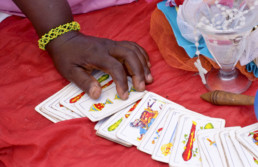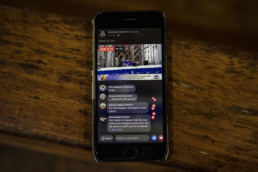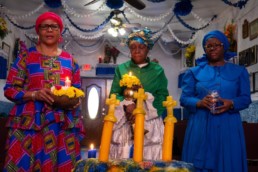New Orleans’ Residents Return to Traditional Healing as Cases of COVID-19 Continue to Grow
New Orleans’ Residents Return to Traditional Healing as Cases of COVID-19 Continue to Grow
Esohe Osabuohien | eco2132@columbia.edu
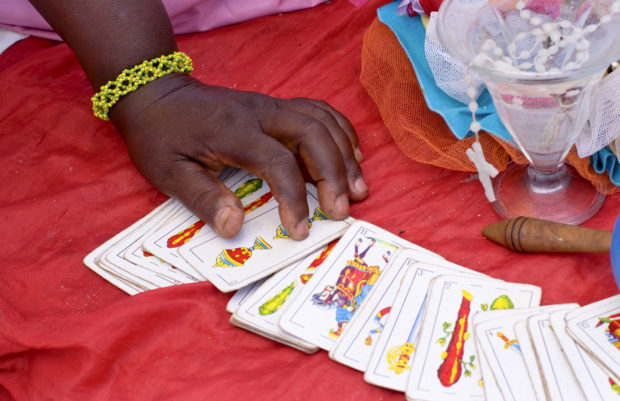
The people of New Orleans are no strangers to crisis. Over the last 15 years, they have been pummeled by hurricanes, unusual concentrations of cancer cases and, now, the onslaught of the novel coronavirus. The impact of coronavirus on the state of Louisiana and its residents has been amplified as a result of their preexisting environmental and health concerns.
The statistics are staggering. In Louisiana, African American residents make up over 50 percent of COVID-19 related deaths, despite being only 33 percent of the state’s population. In addition, the Indian Health Service reports an overall 10 percent increase in positive cases throughout the indigenous population. However, environmental activists believe that the issues they are currently facing are exacerbated by Louisiana’s long-standing environmental crisis.
But just as the New Orleans community has its own challenges, it also has its own remedies. In addition to gloves and face masks and social distancing and COVID-19 testing, it also has plant medicines and traditional spirituality that have sustained the community for generations.
Angela Comeaux is a clinical research nurse and member of the Bvlbancha Collective – an indigenous and ally cooperative that makes plant medicine, regalia and focuses on the support of indigenous communities. Before the outbreak, the collective used to convene twice a week for ceremonial services and prayer and to make traditional medicine. Now their sessions have gone virtual, with prayer taking place every Saturday and Sunday in their respective homes.
“Spirituality is very nature-oriented,” Comeaux said.
All of the medicine and elixirs that they sell are locally sourced, using only what is available and in season. This has also produced some challenges, especially during the time of COVID-19. Comeaux notes that their store sold out of the herb Spanish Needle, a plant that carries anti-malaria properties and has been used to treat the flu and other infections. Additionally, she’s noticed an increase in orders for medicinal herbs with immune-boosting properties.
Prior to COVID-19, the collective would primarily tend to the immediate neighboring communities. However, with the strengthening of social distancing rules, and demands for preventive herbal remedies, they have taken to social media to not only confirm orders but to check-in on group members that might be feeling isolated or are in need of support due to recent layoffs.
Technology is not traditionally used in the spiritual practices of indigenous communities. In the past, many tribal elders have shunned the use of technology as it counters the traditional practices and potentially leaves sacred ceremonies vulnerable to being shared with non-members.
Alternatively, for other traditionally private religions, technology has been able to assist practitioners to go beyond connecting with fellow members but provide services to those not a part of their faith as well.
Janet Evans, who is widely referred to as Mama Sula, is a priestess of Mami Wata, a water spirit associated with West African Vodun, folk Catholicism and Louisiana Voodoo. She is also a student of the orishas, deities of the Yoruba tradition, and provides services such as spiritual cleansings and readings based on the traditions at the Temple of Light (Ile de Coin-Coin), home for the Mami Wata shrine which honors ancestral femininity, in New Orleans.
However, since the onset of COVID-19 Mama Sula has had to take her services online and over the phone. Communicating with clients and attendees of the Temple of Light in virtual spaces is not new for Mama Sula; she hosts a weekly class on Facebook Live for children and their parents, educating them through story and song on spiritual baths, the act of pouring libations – the ritual pouring of a liquid as an offering to a god or ancestor – and Asase Yaa, or Mother Nature/ Earth goddess of fertility of the Asante people in Ghana. But what is new for her is the lack of new clients and income coming in.
“Putting out $100 for a reading may not be a priority for them, it’s more of a luxury at this time,” Mama Sula said.
Most of Mama Sula’s services average about $150, with business blessings starting at $300 and up depending on the service performed. She states that prior to COVID-19, she would make anywhere from $100 to $1,500 on a good week where she could see three or six clients a day.
Although business is slow for Mama Sula right now, she remains hopeful about the current state of things in New Orleans and looks forward to meeting with clients at the temple again in person.
“These last four weeks have been remarkable for me,” Mama Sula said. She has found that the pause created by coronavirus has prompted her to source her own natural medicine and start a medicinal farm. “We work really hard, and it feels nice to get some relief and be able to sit down and create,” Mama Sula continued.
On the other hand, while the opportunity to assist more people in need and connect with other members of the indigenous community has presented itself to Angela Comeaux and other members of the Bvlbancha Collective, they are still plagued with growing environmental concerns, such as rising sea levels and wetland erosion negatively impacting the herbs and plants, like river cane, often used during ceremonies and for making medicine. Then there is COVID-19, which will force many indigenous communities to rethink the ways in which their pipe and sweat lodge ceremonies can safely operate during the time of coronavirus.
“Indigenous culture is going to have to adapt, but it’s been adapting since the beginning of time. We just don’t know what that looks like yet,” Comeaux said.
Community Never Dies, it Just Evolves
Community Never Dies, it Just Evolves
Esohe Osabuohien | eco2132@columbia.edu
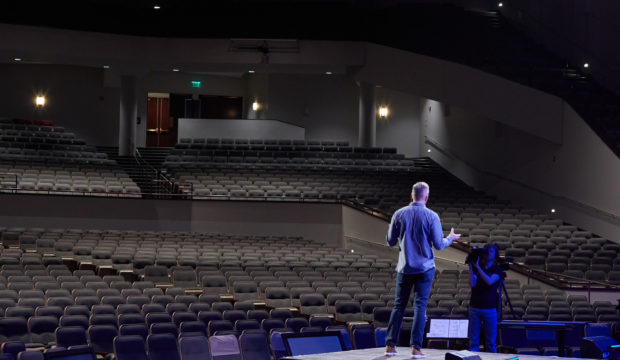
Attending church online was not a new concept for me. Many of the mega churches back home would conduct online services with the option to stream via their websites or Facebook. Even my church home, Russell Street Missionary Baptist, a relatively small Detroit based church with a congregation of about 50 adults over the age of 65 and their grandchildren, would stream service through Facebook live for members to tune into from the comfort of their homes.
However, what was new to me was the need to tune into service frequently.
Before moving to New York, I might have watched our streaming services once or twice; video lag would often keep me from enjoying the Word. Nevertheless, I would always connect to my faith in some other shape or form be it: reading my Daily Devotional on the Bible app, listening to religious and spiritual podcasts, reading a religious WhatsApp message from Nigerian Aunties, or just listening to gospel music. But, since moving to New York City and starting grad school, I must admit that I had fallen off with keeping my faith.
In the last nine months I had gone to church four times, once in September 2019 when I was trying to find a new church home in New York City, once in January 2020 when I went back home to Detroit, and twice in February for reporting assignments. My Bible app and WhatsApp messages went unopened, taking my 362-day reading streak in the Bible app back down to day one. I rarely felt inclined to tune into church service be it through my church’s Facebook live, listening to Bishop T.D. Jakes’ podcast, or attending the virtual service of another popular Detroit based church.
I felt as though God knew my heart. I was still a member of the flock, following and trying to lead by example, but I was also busy.
However, this all changed in March. As the novel Coronavirus (COVID-19) started sweeping through the nation, I felt the need to reconnect.
On Sunday March 15, I attempted to tune into my church’s Facebook livestream, the lag bothered me so I tried a different service and called my mom to see if she was tuned in as well. She was. She was also trying to help my 91-year old grandmother who lives alone and does not have a smartphone, but knows all about what’s trending on Facebook and social media listen in. Despite some technical difficulties, we were connected. On Tuesday of that same week, I tuned into an Instagram live tarot reading hosted by TatiannaTarot, a New Orleans based Diviner, spiritualist and Iyanifa – a priestess of the Yoruba tradition. I wanted to see if she had any messages for the week, or anyone I could connect to for follow-up on my story about followers of the Yoruba tradition. During her four-hour or more session, there were at least 500 people tuned in and asking questions or seeking guidance from either her or their ancestors, she responded and gave a reading for almost every question.
Both the Sunday service with my family, and her reading gave me something that I had been missing for a while, spiritual restoration and a globalized sense of community.
Honoring Babalú-Ayé and Oshun
Honoring Babalú-Ayé and Oshun
Esohe Osabuohien | eco2132@columbia.edu

Spiritual incantations dedicated to Yoruba gods fill the room as 16 adults, 15 women and one man, file into the second-floor studio of the Cumbe Center for African and Diaspora Dance located on Fulton street in Brooklyn. Today’s incantations are dedicated to the Orisha Elegua -- deity of the crossroads, destiny and fate. The dance instructor, Tony “Yemaya” Domenech, shouts over the clamor to let everyone know that they should find a place on the floor and start stretching. There is no time to waste for today’s lesson as the students would be learning the movements for two Orishas, Babalú-Ayé and Oshun.
In the Yoruba tradition, Elegua serves as the gatekeeper between the physical world and the spiritual. Having the students warm up to his incantation creates an open pathway of communication with the other Orishas. Additionally, Domenech, the instructor, carries the title of Yemaya signifying that he is a son of the Yoruba deity, Yemaya, goddess of salt water, mother of all living things, and guardian of mother and children.
Once the students have found their space on the floor, Domenech introduces himself and informs the students that he prefers a high energy classroom and that his methods function on call and response. The students shout a collective, “yes!” and the lesson begins.
Domenech starts the class by explaining the basic steps for all Orisha dances, “everything is flatfooted, knees bent, and shoulders back moving from the pelvis,” he explains. He goes on to say that feet are the foundation for everything, and a firm, flatfooted stance is important for building the base of the dances. A flatfooted stance is also important because the movements are heavily rooted in a west African dance tradition. The students shout their “yeses” in acknowledgement that they understand.
“No one is going to be mounted, we’re just focusing on the dance,” Domenech said while preparing to teach the first step. To be mounted by an Orisha, in the same way of mounting a horse, is to be possessed and embody the Orisha. He explains that this is an exercise in dance and not in ritual. You don’t have to be a follower of the religion to learn the dance.
One of the benefits of non-practitioners of the Yoruba tradition learning how to perform the movements is that they can participate if invited to a Yoruba event, he adds.
Domenech turns up the music, and praise to Elegua, then Babalú-Ayé, fills the room. The students seem very eager to learn the moves and get them down:
Step 1: Center your body towards the three batá drums. The batá drum is a double-headed percussion instrument, used predominantly for religious ceremonies. There are 23 standard rhythms for the Orishas, and when performed a certain way can summon them.
Step 2: Learning the “V steps,” a move that adds an element of Christianity to the Yoruba practice. The V steps movements are performed in the shape of a cross – step forward (the Father), step backwards (the Son), step to the left and then to the right (for the Holy Spirit). These steps are more aggressive, and done during the performances for Shango, Oshun, and Oba; the feet are planted and meet with each beat of the batá drum. Domenech stresses this to the students, a predominantly female class with one male, as he sees them beginning to mimic his movements.
“It should be playful, but not cute,” said Domenech.
With the first steps down, Domenech pauses the class to tell the students the story of the gods they are dancing for.
Babalú-Ayé, also known as Saint Lazarus in Catholicism, is the “Father, lord of the Earth,” overseeing infectious diseases and health. The story of Babalú-Ayé, as told by Domenech, is that he was a lady’s man who went to see the Orisha, Orunmila, for divination. Orunmila counseled Babalú-Ayé to abstain from women for a while, but Babalú-Ayé disobeyed him after becoming smitten by a new woman. As a result, he was cursed with leprosy and banished from his kingdom.
When performing for Babalú-Ayé, he appears as a “crippled man” who carries a cane. Therefore, his dance moves are deep with hard dips and rolling shoulders. As Domenech finishes the story of Babalú-Ayé, the women in his class try the dance moves, but Domenech has to instruct them to make the steps “uglier.” They should look like they’ve lost everything.
The Opening of Service
The Opening of Service
Esohe Osabuohien | eco2132@columbia.edu
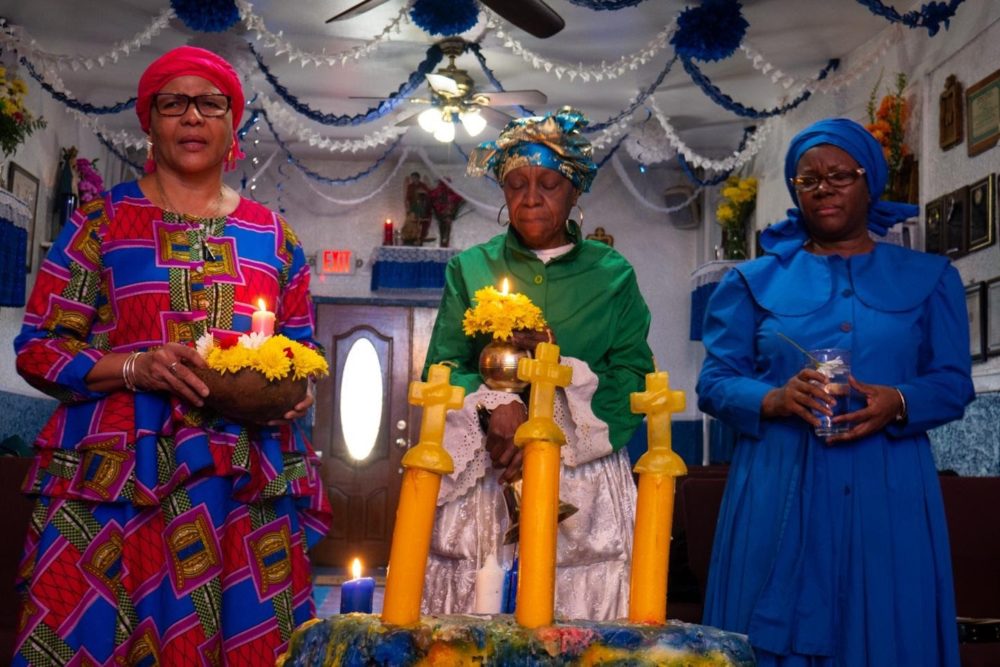
The parishioners at the Yoruba Orisha Baptist Church in Brooklyn are adorned in white and multicolored headwraps, as well as dresses traditional to Trinidad and Tobago, the country from which most of the members immigrated.
The white headwraps have a dual purpose, said a longtime member known simply as Mother Cora, an older woman who has been with the church since its earlier days.
“It is to signify that today is Holy Communion, and also how we know who’s a visitor as they would not know ‘white’ is the customary uniform for today,” she explains with a smile.
As other members file in on a recent Sunday, they are greeted by the newly decorated vestibule that is covered in Christmas lights, blue and white streamers, and a banner that reads: “Happy Anniversary,” in preparation for the church’s anniversary and celebration of Our Lady of Lourdes Day. They are also greeted by the Rev. Selwyn Wilkinson, the spiritual father of the Yoruba Orisha Baptist Church, who founded the church in 1998 upon immigrating to New York City from Trinidad and Tobago.
The Yoruba Orisha Baptist Church, located on 2089 Nostrand Avenue in Flatbush, is primarily made up of people from the Caribbean who brought with them to Brooklyn elements of Spiritual Baptist tradition, Trinidad Orisha practice and other forms of ancestral worship. These traditions mirror the customs of [Cuban] Santeria in that they are rooted in the Yoruba religion - an African ancestral faith - that was brought to the Americas and Caribbean during the transatlantic slave trade and syncretized with Christianity.
After the members take their places, the women elders, known as “mothers,” are positioned at the front of the church sitting along the side of the ornately decorated altar that is adorned with candles, a Black Jesus Christ, a photo of former President Barack Obama, flowers, and a bell. As the mothers continue lighting candles in the vestibule, everyone quiets signifying that service is about to begin.
“If you’re going to go out the night before, then we must still remember that church service begins at 11 a.m., sharp. Church elders should be here by 10:30 a.m” said Wilkinson sternly.
The church’s phone line states that service starts promptly at 11 a.m., but when the majority of the members arrive and set up, it is a quarter to noon.
Before the service can fully start, the mothers of the church instruct the congregation to form a circle around a rainbow-colored pillar of wax known as the Steps of Calvary. At the top of the steps sit three yellow candles in the shape of crosses, representing Jesus Christ and the two thieves on Mount Calvary. Below the top step, are candles of various colors and sizes, a pink candle is also lit and a bowl filled with water and a single white carnation is placed at the base of the pillar alongside a silver anchor and gold handbell. Next, one of the mothers walks around the circle pouring Florida Water cologne onto our hands. The room is instantly filled with the Water’s light citrus scent mixing with the heavy smoke from the candles creating a sweet fragrance in the space.

